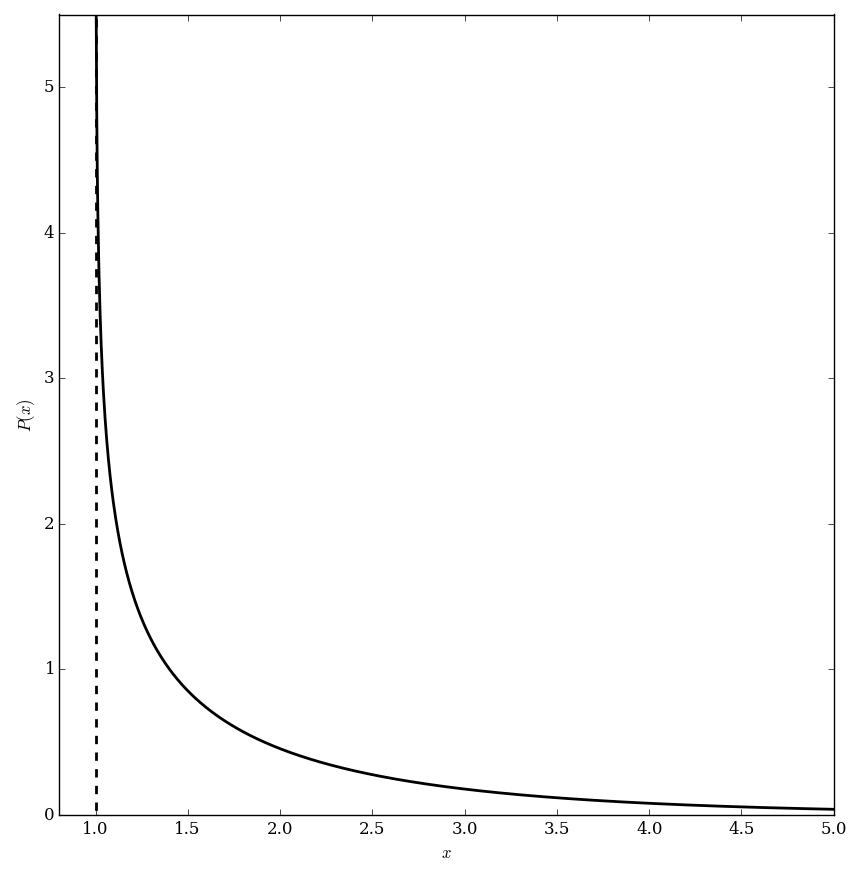Difference between revisions of "Prime zeta P"
From specialfunctionswiki
| Line 3: | Line 3: | ||
where $\mathrm{Re}(z)>1$. It can be extended outside of this domain via [[analytic continuation]]. | where $\mathrm{Re}(z)>1$. It can be extended outside of this domain via [[analytic continuation]]. | ||
| − | + | ||
| + | <div align="center"> | ||
| + | <gallery> | ||
| + | File:Primezetaplot.png|Graph of $P(x)$ for $x>1$. | ||
| + | </gallery> | ||
| + | </div> | ||
=Properties= | =Properties= | ||
Revision as of 18:21, 24 May 2016
The prime zeta function is defined by $$P(z) = \displaystyle\sum_{p \mathrm{\hspace{2pt} prime}} \dfrac{1}{p^z},$$ where $\mathrm{Re}(z)>1$. It can be extended outside of this domain via analytic continuation.
Properties
Theorem
The following formula holds: $$P(z)=\displaystyle\sum_{k=1}^{\infty} \dfrac{\mu(k)}{k} \log \zeta(kz),$$ where $P$ denotes the Prime zeta function, $\mu$ denotes the Möbius function, $\log$ denotes the logarithm, and $\zeta$ denotes the Riemann zeta function.
Proof
References
References
Fröberg, Carl-Erik . On the prime zeta function. Nordisk Tidskr. Informationsbehandling (BIT) 8 1968 187--202.
How does ∑p<xp−s grow asymptotically for Re(s)<1?
The Sums of the Series of the Reciprocals of the Prime Numbers and of Their Powers
